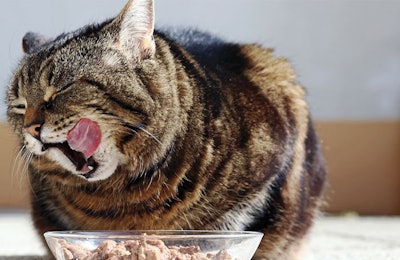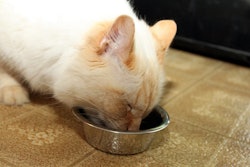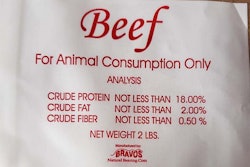
Dry pet food has long ruled globally, comprising as much as 67% of the U.S. pet food market in 2020, according to Packaged Facts, and at least 50% globally, according to Euromonitor. The dry share has been lower worldwide mainly because wet pet food, especially for cats, was somewhat more popular in markets and regions like Europe—but not nearly as popular as dry.
Yet within the last few years, the wet category has seen healthier growth, and the pandemic-driven boost to pet food sales in 2020 seems to have also spurred even higher wet pet food sales increases. “We’ve actually seen the wet food category grow 1.5 times the total market in the past year,” said Ikdeep Singh, president of the North American division of Mars Petcare. That growth is playing out worldwide.
Wet pet food sales on growth path before 2020
Pre-COVID, Euromonitor data showed wet pet food growing steadily in the European Union from 2013-2018, with a further projected increase of about 6% through 2022, driven by wet cat food growth. (The data was shared by David Primrose of Synergy Petfood in a webinar organized by APC.) In the U.S., wet dog food was having an impact, growing 4.7% from 2017 to 2018, according to Nielsen.
Flash forward to 2020. Like every other category of pet food, wet pet food sales surged during initial COVID-19 lockdowns in March 2020, as consumers stocked up on all sorts of goods; then sales experienced a significant falloff as shopping habits normalized somewhat. Yet, while dry pet food sales continued to lag later in the year, at least in the U.S., wet pet food recovered well, said Sean Simpson, associate client director for Nielsen, during Petfood Forum CONNECT in September.
By June 2020, sales of wet pet food (along with pet treats) had rebounded to 2019 levels; by August, they were up 7.7% year-over-year (YOY) in all U.S. channels. In e-commerce, which as we all know has exploded since the pandemic began, wet pet food sales soared 88.2% YOY in March 2020, then settled in at a healthy 58.4% by July. That seemingly continued, as Label Insight, which provides data on consumer product goods, found that consumers’ online searches for wet dog food increased in the third quarter of 2020.
The result is that between April and August, wet pet food gained 2.1 points in U.S. market share, compared to dry food losing 3.6 points, according to Nielsen. Growth for newer formats, such as refrigerated and frozen, was even more robust than that of shelf-stable wet foods. Still, in a July 2020 Packaged Facts survey of U.S. consumers, 66% of cat owners and 49% of dog owners said they feed their pets wet or moist pet food in cans or pouches.
Category benefits from increased owner-pet interaction
What accounts for this steady growth for what has long been a smaller part of the pet food market? Part of it is due to ongoing product development, especially in cat food, along with advances in packaging technology that eliminate some of the messiness and hassle of opening cans. (Not to mention having to adequately cover opened cans for safe, non-smelly storage in the refrigerator.)
During the pandemic, the category has seemingly ridden that wave of development into another wave of enhanced owner-pet interaction. “With pet parents spending more time with their pets, consumer behaviors are shifting as well—like their desire to add variety to their pet companions’ diets,” said Singh of Mars. “One way they’re doing this is by feeding more wet food.”
His comments were echoed by executives of other pet food companies, who also addressed the perceived inconvenience of feeding wet food. “Convenience is less of an issue now that more people work from home, so wet can be fed exclusively instead of as an infrequent treat,” said Ann Hudson, vice president of marketing for Whitebridge Pet Brands LLC and the Tiki Cat/Tiki Dog brands, in an article by Lindsay Beaton in the March 2021 issue of Petfood Industry.
Thanks to this additional time with their pets, owners are recognizing more benefits of wet foods, according to Catherine Lenox, DVM, regulatory veterinary manager for Royal Canin. “Wet food is not just a treat for cats and dogs. It provides complete and balanced nutrition and has other benefits such as promoting healthy hydration and helping pets feel full.” She also mentioned that cats and dogs taste more than just flavor, also being attracted to texture, aroma, shape and size.
The bottom line, according to Hudson: “The wet category will continue to grow because it is better for the pet, takes less space in the store and owners like it.”
















